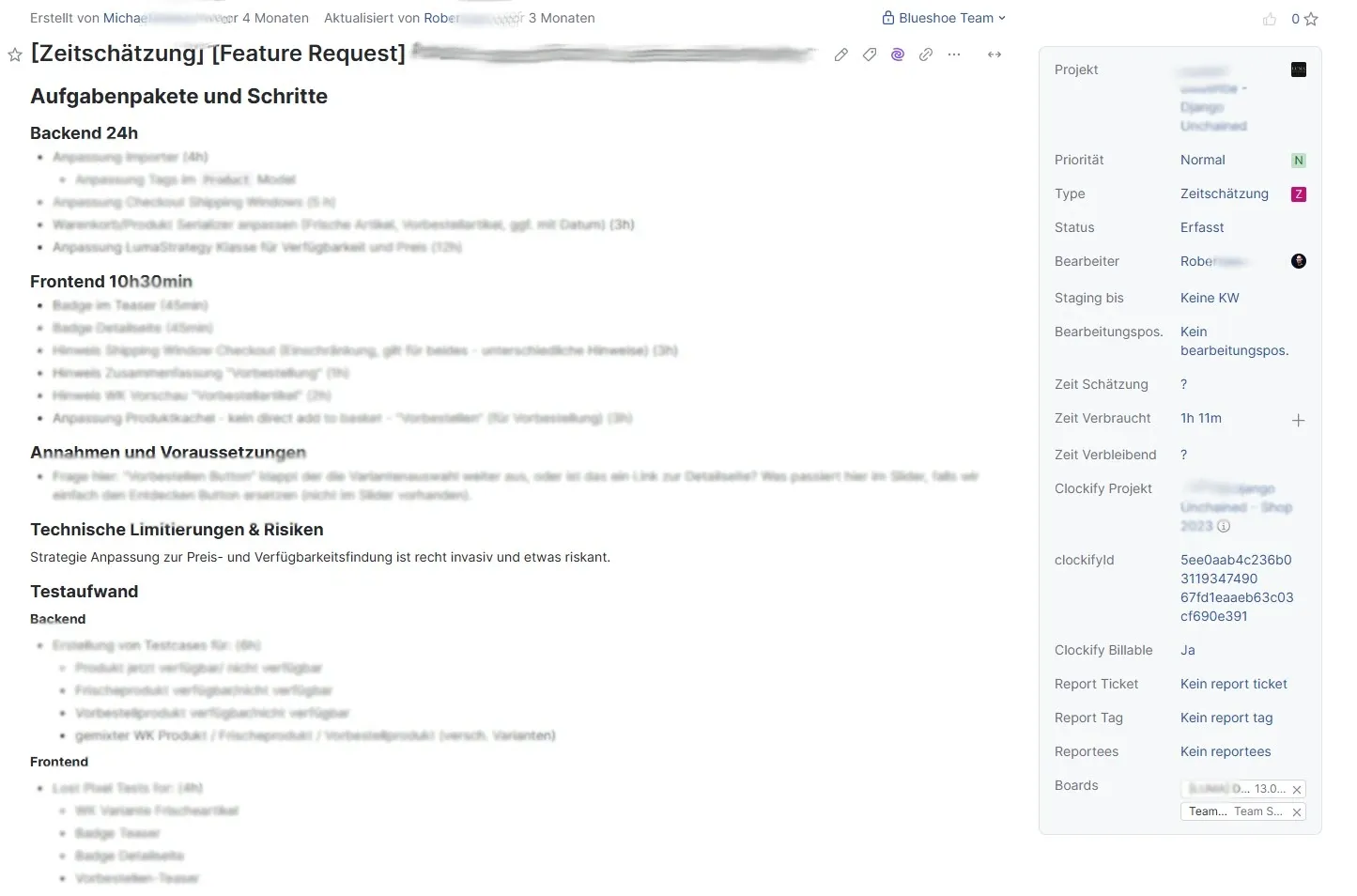09.08.2025
Behind the scenes at Blueshoe: our process for time estimatesTime estimates at Blueshoe: How we plan your projects realistically
Time estimates are an absolute must for every project. They help us to realistically assess the effort required for individual tasks or the entire project – and ensure that we can plan resources and deadlines sensibly. Only with a good time estimate can expectations be clearly communicated to customers and the team, and unpleasant surprises avoided.
Of course, time estimates are never 100% accurate. Projects often bring unexpected challenges: technical hurdles, missing information, or changing requirements. That's why we always plan for a buffer. This buffer gives us the necessary leeway to react flexibly to such situations without disrupting the entire schedule.
It is important that the buffer is neither too small nor too generous. It is based on experience and the complexity of the task at hand. And just as important: we communicate transparently how the time estimate is calculated – including the buffer. This way, everyone involved knows where they stand at all times and can plan better.
At Blueshoe, we therefore rely on a clear, structured workflow that allows us to record time estimates directly in the ticket system and make them traceable. In this article, we provide an insight into exactly how we do this and why it works so well for us.

Our time estimation process in detail
When a customer approaches us with a new requirement or problem that requires a time estimate, we initiate a clearly structured process. Our project manager creates a separate time estimation ticket as a sub-ticket to the main ticket and assigns it to a developer. The team then clarifies internally which tasks need to be done, which prerequisites must be met, and whether there are any dependencies. If questions arise, we naturally involve the customer directly - this way, we avoid misunderstandings from the outset.
The developer who receives the ticket is responsible for providing a realistic and careful estimate. If necessary, they seek support from colleagues to ensure that the estimate is as accurate as possible. To be on the safe side, we have every time estimate checked by a second developer.

At the end, the customer receives a transparent overview from us with the final time estimate and the breakdown of the individual tasks. This allows them to decide in a relaxed manner whether to approve the estimate or whether any outstanding questions need to be clarified.
Important framework conditions for time estimates
- Maximum time expenditure: We keep time estimates as lean as possible: ideally, they should not exceed 1–2 hours of work.
- Analysis budget: If it becomes apparent that a task is more complex and the time estimate will take longer, we discuss this with the customer at an early stage and request an analysis budget.
- Second opinion: We also rely on the perspective of two developers: each time estimate is checked and confirmed by a second developer. This ensures that our estimates are realistic and of high quality.
Structure of a time estimation ticket
The time estimation ticket follows a clear structure:
- Task packages and steps A list of tasks 1-X, with optional notes and detailed descriptions.
- Assumptions and prerequisites
What dependencies exist? Are there any prerequisites that must be met by the customer or other teams? - Technical limitations & risks
Possible technical challenges or risks that may affect the effort required. - Testing effort
Estimation of the necessary testing effort. - Buffer
The project manager adds a time buffer for unforeseen events. - Confidence level
If the estimate is less than 100% certain, the unknowns are clearly listed.
Conclusion
Our clearly structured time estimation workflow ensures that everyone involved maintains an overview at all times. Transparency, realistic planning, and open communication between customers, project management, and development are a matter of course for us. This enables us to assess and implement new requirements quickly and efficiently—to the benefit of everyone.
If you would like to know more about how we work or need support with your project, simply get in touch with us! We look forward to hearing from you.









Do you have questions or an opinion? With your GitHub account you can let us know...